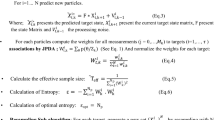Abstract
This paper mainly studies bearing-only target tracking based on bionics for IRST system. Some solutions for the key problem are presented in order to apply in an actual bearing-only engineering system. They include sensor technology, measurement pretreatment technology, association gate technology, data association technology, state filtering technology, etc. The premise of these new approaches is designing an effective sensor system which can reliably search and track targets in a large range. Then, it is important to improve the confirming efficiency of the real target and limit false track overextension with the dense clutter. Then, tracking processing needs a precise target initialization information and association information between the existing target and isolated measurement. At the same time, the threat level of the bearing-only target needs to be estimated based on limited bearing-only information. Finally, aiming at unrecognized model and complex maneuvering motion for bearing-only target in polar coordinates, an effective approach of state filtering algorithm with appropriate computation cost will be given. The application of the proposed approach in an actual engineering system proves its effectiveness and practicability.
Similar content being viewed by others
References
Popp RL, Pattipati KR, Bar-Shalom Y (2001) m-Best S-D assignment algorithm with application to multitarget tracking. IEEE Trans AC 37(1):22–38
Fogel E, Gavish M (1998) Nth-order dynamics target observability from angle measurements. IEEE Trans AES 3(24):305–307
Mangzuo S (1995) Range information extraction from tracking data using object kinematic parameters. SPIE 2561:484–488
Kronhamn TR (1998) Bearings-only target motion analysis based on a multi-hypothesis Kalman filter and adaptive oweship motion control. IEE Proc Radar, Sonar Navig 145(4):247–252
Pattipati KR, Deb S, Bar-Shalom Y et al (1992) A new relaxation algorithm and passive sensor data association. IEEE Trans AC 37(2):98–213
Chen H, Li C (2010) Data association approach for two dimensional tracking based on bearing-only measurements in clutter environment. J Softw 5(3):336–343
Lou Y, Zhu H, Li C et al (2006) Key technology report of multi-target tracking fusion system
Metropolis N, Rosenbluth AW, Rosenbiuth MN et al (1953) Equations of state calculations by fast computing machines. J Chem Phys 21(6):1087–1091
Kong A, Liu JS, Wong WH (1994) Sequential imputations and Bayesian missing data problem. J Am Stat Assoc 89(425):278–288
Gordon NJ, Salmond DJ, Smith AFM (1993) Novel approach to nonlinear-non-Gaussian Bayesian state estimation. IEE Proc F, 140(2):107–113
Johnston LA, Krishnamurthy V (2001) An improvement to the interacting multiple model (IMM) algorithm. IEEE Trans Signal Process 49:2909–2923
Author information
Authors and Affiliations
Corresponding author
Rights and permissions
About this article
Cite this article
Chen, H., Han, C. & Zhang, Y. Research on tracking of maneuvering multi-target based on bionics for IRST system. J Supercomput 58, 106–121 (2011). https://doi.org/10.1007/s11227-010-0534-8
Published:
Issue Date:
DOI: https://doi.org/10.1007/s11227-010-0534-8




